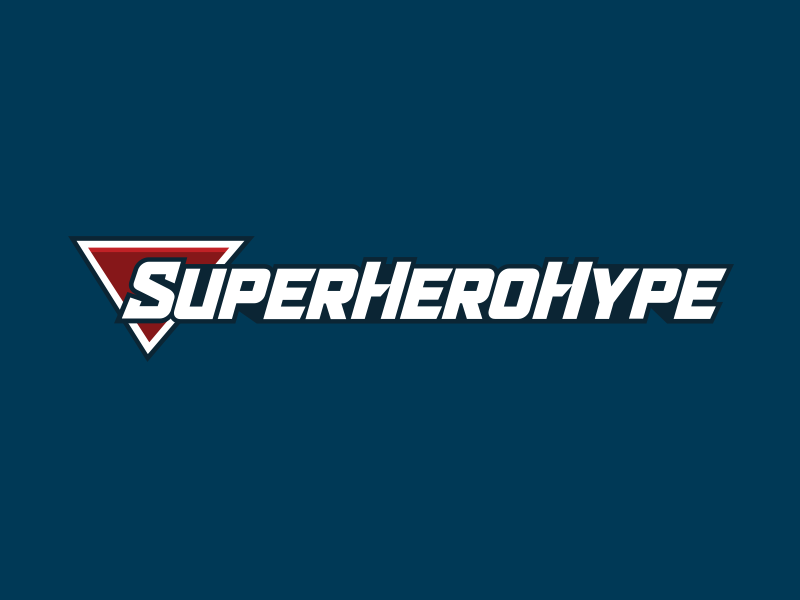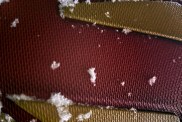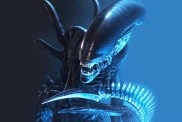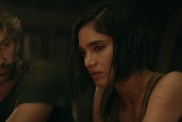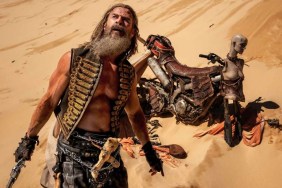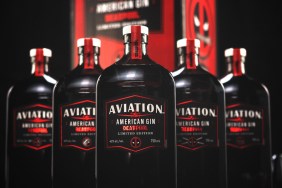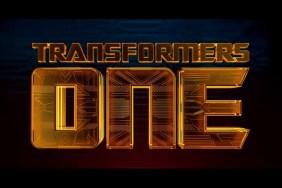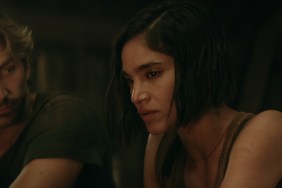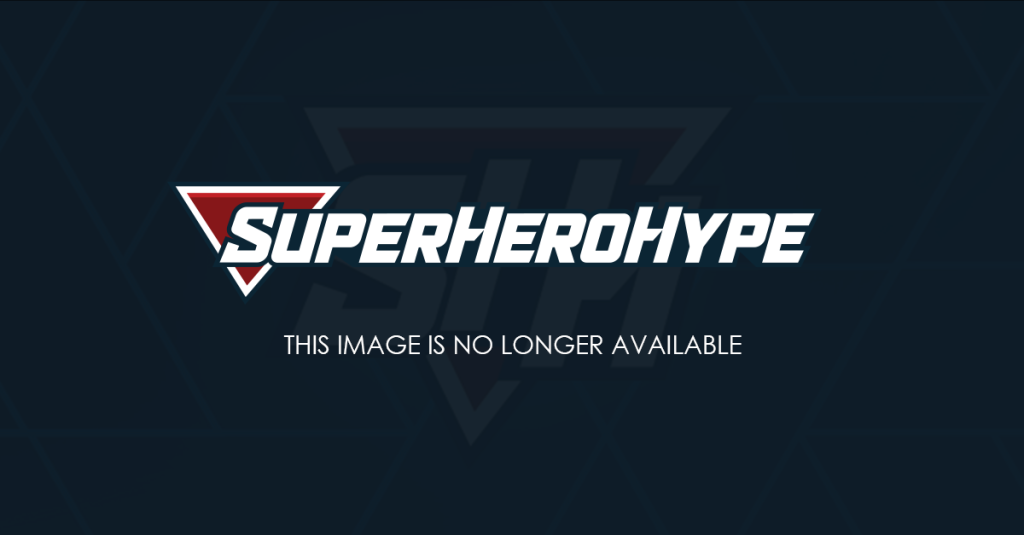
One thing we’re quite proud of here at ComingSoon.net/Superhero Hype! is our ability to spot filmmaking talent early, which is why we’re thrilled to have had a chance to talk to filmmaker Gavin Hood three times now, first for his Oscar-winning South African drama Tsotsi three years ago (that interview) and then for his political thriller Rendition (that interview). When we learned he’d be helming X-Men Origins: Wolverine, we were really excited, because we knew he’d provide a unique voice to the franchise.
Essentially, the movie covers the early history of Logan/Wolverine, as played by Hugh Jackman, mostly dealing with his relationship with his half-brother Victor Creed, played by Liev Schreiber, and how a feud between them leads Logan to the Weapon X Facility where Colonel William Stryker (Danny Huston) transforms him into the adamantium-clawed man-beast we all know and love. Along the way, we get to see lots of mutants from the comics including Gambit (Taylor Kitsch), The Blob (Kevin Durand) and an early incarnation of Deadpool (Ryan Reynolds), but it’s a real prequel in that those who’ve seen the earlier “X-Men” films will get some nice surprises, as well.
Unfortunately, we didn’t have a chance to see the movie before talking to Gavin this time around, but we’re glad to say that he hasn’t disappointed with his first attempt at making a big budget action blockbuster, especially in terms of making a prequel to the “X-Men” trilogy.
CSSHH!: How has this experience been as far as compared to the last two movies?
Gavin Hood: It’s something on a much larger scale in terms of expectations, budget, everything was on a bigger scale. I guess the balancing act was like don’t be intimidated by the scale, just keep telling the story, just do what you do which is to focus on getting great performances out of your actors, giving you the spectacle that’s required of a summer blockbuster and don’t let the amount of time that it takes for these effects and for action stuff to distract you from the fact that still for me the most important thing is for the audience to connect to the characters in the movie. That’s the big challenge on a movie like this, and I have a new respect I think for this kind of filmmaking, in the sense that it’s very easy to be distracted by the technical aspects of things, the green screen work and all the special effects requirements that actually slow you down and mean that you have to concentrate twice as hard on the emotional beats, because it means you’re not getting the same flow as you would get in doing a more intimate drama.
CSSHH!: Did you have to put yourself in a different head before making this? “Rendition” was still fairly complicated, but done for less money. Did you just find that you could go in with bigger ideas without worrying about the money for once?
Hood: I know people want me to say that visual FX were something I’d never seen before, but it isn’t true. In “Rendition” there were about 60 shots in “Rendition” that were visual FX. It’s not like I’ve never done special effects before. The difference was just the sheer volume of it, and the way that every day, every scene is for sure a visual FX shot in almost every scene you do. It just means the actual process of getting through the scene is very disrupted by the technical nature of what you’re doing. Once you understand that, you just wear a different cap right now in doing the dramatic section of the scene and that’s where our total focus is. “All right, now we have to stop and make sure we have what we need in order for the special effects to be effectively done,” and you do that. You get into a rhythm, and once you get into that rhythm it’s very simple. You still just try to make the best film you can, get the audience to connect with the characters and use all these wonderful tools of special FX and action to enhance the moviegoing experience, that’s all.
CSSHH!: Hugh must have been a great partner in making this movie because he’s had experience doing the big “X-Men” movies but also making smaller ones. So what was he like as a collaborator as far as being a producer and an actor and having been through this experience three times before?
Hood: In a sense, yes he would always say to me when I said, “Look, you’ve been through this character,” but in the other three movies he’s part of an ensemble cast and his past is shrouded in mystery. In a weird way, it was pretty hard for him because he didn’t know who he was. He never had to reveal too much because in the other three he was part of an ensemble. In this movie, he carries the movie and it’s all about how his character is formed and how he comes to lose his memory. So for the first time both he and I were both exploring the emotional history of the character. I suppose that was the fun of this—we were not doing a sequel, we were doing a prequel. Obviously, if you’re doing a prequel, the emotional history of the character has already been mined and all you’re really doing is taking a character that the audience really knows well and putting them in a new story. This was almost the reverse. Here, we’re taking a character the audience thinks they know, but doesn’t really know at all–indeed, he doesn’t even know himself–and we’re going to go back in time and explore his origins and how he came to be this man who barely knows who he is. So in that sense, it was fun for me, because I’m getting to do what is usually done early on in a series, to explore the nature of the character. So I hope the movie does two things: I hope it gives everybody the spectacle and action they deserve and expect from a summer blockbuster, but that it’s also a strong character-driven story.

CSSHH!: How obligated do you feel about going back to the comics and trying to become more aware of the comics? It’s a very complicated history obviously in the comics…
Hood: Obviously I went back to the comics and studied the comics. What you discover though–which some comic book fans may not want to hear–is that the comics don’t agree with each other. This is a character who has been written about and illustrated by many different writers who spanned over many decades. What they all have in common is of course that fabulous line which says, “I’m the best there is at what I do, but what I do best isn’t very nice.” Now, every book and certainly the film is true to that idea, which is the guy who doesn’t necessarily like his own nature has this tendency towards berserker rage. He’s trying to control his more animalistic side, but occasionally, he lashes out at the world with his claws. Those are the sort of things that you draw on that you must be true to. But whether he wears the yellow spandex outfit or whether he wears jeans and a shirt, there’s evidence of both in the comics, and I chose to go with (the latter) version. That doesn’t mean it’s more definitive.
If somebody else in the future wants to make a version of the movie with Wolverine in yellow spandex, I look forward to seeing it work because in a sense we’re all just creating our interpretation of a character that has achieved this sort of mythic status. That is a credit to those original comic book writers who inspired so many people to want to illustrate him in different ways based on, I think, essentially the nature of the character, not his external clothing, but his nature, which is a man struggling with his tendency towards rage and wanting to try and find peace in the world and a character that actually wants to connect with a woman in many of his stories. The famous Japanese stories were about his passion for a woman. What I find interesting about him is that he’s, in a way, an almost polar opposite of the kind of male heroic character that I grew up with which was much more emotionally-detached. It was Clint Eastwood in “Pale Rider.” He’d come in and save the day, don’t get emotional, do his thing and maybe sleep with a woman or two here and there. He’s James Bond, but never fall completely in love. While here we have an image in popular culture of a man who is extremely emotional, acknowledges his struggle with his male emotions of rage and frustrations and also desperately wants as much to connect with somebody. The character that you’re left with that is still in the vein of the old-fashioned emotional retard is the character Victor Creed, who in this particular version of the male is the tragic character. He’s the guy that has no one. He’s the guy who as much as he talks about how he doesn’t need anyone and he’s emotionally-detached, is probably the most lonely figure in the movie. So that’s a wonderful sort of inversion of what was a sort of iconic male image, but I’m probably getting far too deep…
CSSHH!: I haven’t seen the movie yet, but I’m interested in the casting of Liev Schreiber as Victor Creed, because in the first “X-Men” movie they set him up as a kind of a beast, and Liev is a very thoughtful and intelligent man, really the opposite. So did you want to explore a different side of him as an actor?
Hood: Well, here’s what the breakthrough was. There’s evidence in the comic books that Victor Creed and Wolverine are half-brothers. There are others who deny it completely, but there is the service towards his origin as James Howlett where he has another father and there’s a young boy in the story with him who is the son of the groundskeeper. The groundskeeper turns out to be his father and the man he thinks is his father is not his real father, so he shares this father with the boy who then becomes Victor Creed. Now, that was not in the original script and I have explored these comics and I came across these guys, and thought, “This is something I would really like to explore” because if these guys are related and we can draw on this particular idea from the comics, well, this just gives so much more emotional power to this relationship. Instead of being Wolverine against Sabretooth, it’s Wolverine against, in a way, his doppelganger, because he’s related to this guy. His DNA and this guy’s DNA are shared, and his tendency to be like Victor is very much present in his own makeup, not just some psychological thing. I loved the idea. It makes it much closer to what I think made those original Greek superheroes so great; Zeus, and Poseidon and Apollo and all these original superheroes with flying thunderbolts and conjuring up storms, most of their sagas were about their relationships with their family. It’s operatic in that sense, and you’re dealing with profoundly human emotions, but played out in a sort of an operatic, mythical way. That was what was great about those early Greek superheroes and that’s what great about these modern ones.
CSSHH!: I know there were a lot of people working on the script before you got involved. As far as picking the supporting players for Wolverine, was that something Fox got involved with in terms of deciding which characters to explore? What was the process in deciding whom to surround Wolverine with in this movie?
Hood: Well, there are certain characters that fans have been clamoring for, the most notable of which is Gambit. Hugh always said they were looking for an opportunity to bring him into the franchise in a way that felt organic and justified and not just bolted on. The great thing about this story is that Wolverine, as he moves through the story, meets various people along the way. In that sense, it’s almost like a road movie, so it was a perfect opportunity for him to meet different characters. He’s obviously pursued relentlessly by Sabretooth who is consistent through the entire movie, but on his journey he meets different characters. So the question is, well, which characters can he meet? It’s a great opportunity to introduce a character like Gambit, because you don’t have to meet him at the beginning of the movie. You’re on this road trip and he’s meeting different people along the way.

CSSHH!: I don’t want to get too much into the issue of the piracy, but I understand that there are going to be different endings. Was that something that was always going to be part of the plan?
Hood: One of the things that’s always been a part of the Marvel Comics movie thing is they always have Easter eggs. They usually have something at the very end of the credits so that the people who hold onto their bladders for long enough, they get this little Easter egg that is something that might happen in the future or whatever. We wanted to be true to that, but the only thing we’ve done is… you might get a different Easter egg in different prints. There’s another Easter egg where one is in one print and one is in another print.
CSSHH!: Will people have to travel across state to see all these things or is it not that deep?
Hood: No, we hope to sort of mix it up within states. I don’t think you’ll need to get in your car and go to California, man, but there’s little Easter eggs at the end. I don’t want to overstate it, but there’s just the fun of a couple different add-ons, but just buried in the credits somewhere.
CSSHH!: As far as introducing these new characters, did you have to try to set things up? Eventually, Fox is going to probably want a “Deadpool” movie or a “Gambit” movie, etc. Is that part of the process to try to get things in there which you or somebody else might be able to build onto later?
Hood: Sure, I mean, “X-Men 1” led to “X-Men 2” and if “Wolverine” could lead to another movie, whether it be a Wolverine movie or a Gambit movie, of course that’s good, not only for the studio but for the fans, but it all depends on how people respond to this movie. The truth is, we’re gonna learn a lot on May 1st. We’re gonna learn whether people enjoyed the movie, and we’re gonna learn which characters they enjoyed. So my focus was simply on trying to make the best movie I’m making right now and what happens next has not been discussed, and it won’t be discussed until well after May 1st when we know whether people actually loved the people or not. I’m just looking toward May 1st and hoping that people enjoy the movie we’ve made.
CSSHH!: What about for Gavin Hood? Do you feel at this point that you want to continue on this kind of road, not just in superheroes or “X-Men,” but just doing bigger movies like this? Do you feel like the need to go back to some of your earlier roots?
Hood: The only reason you make a small movie is ’cause when you start out the option to make a big movie doesn’t exist. You need to get a budget together to make a movie. For me, it’s not about the size of the movie, it’s about what character do I connect to, but I’ve always been a fan of epic storytelling. I loved “Lawrence of Arabia” and have been a big fan of David Lean. Being able to paint on a big canvas in an international way, covering a big story, but at the heart of which is a great character. That’s the kind of movie making I want to be doing. It’s character-driven stuff, but hopefully, it’s set in some sort of epic environment. Even with “Tsotsi” I tried, even though it’s a small movie, to set it against this sort of rather epic backdrop of a big city where he’s just one little figure, but when he’s walking on the railway line, the big city is behind him which is precisely why I didn’t shoot it on handheld sort of tight stuff. I wanted to somehow back away and feel the scale of the place he was up against. So I’ve always enjoyed scale. If you watch “Tsotsi,” it’s shot in a very classic way on 2:40 format. It’s not shot handheld on a 1:85 format, but of course, there wasn’t the budget to do something as epic as “Lawrence of Arabia.” (chuckles)
CSSHH!: I remember it had a couple shots in there that were fairly epic. Is there anything you’re looking at in particular to do next? Scripts or books to adapt?
Hood: There’s a bunch of stuff now, but I’m not being coy when I say I really don’t have anything to announce, mainly because I think that the industry will want to see what I did with “Wolverine.” I think that there is a great deal riding on every film you do. Your next film depends on what you did before it. It really does, because people want to see what you do and so for me, it’s just about doing the particular film I’m doing as well as I can and then put it out in the world and hope that people enjoy it and the next film will come.
CSSHH!: Are you taking some kind of resting period as well?
Hood: I’m taking a little time off, but I haven’t really taken a break between “Tsotsi” and “Rendition” and “Wolverine.” In the interim, I had twins that were actually born right in pre-production and I flew out to Australia when they were eight weeks old. (laughs) So this has been quite a year with twins, and I think taking a little break won’t be a bad thing.
X-Men Origins: Wolverine opens everywhere on Friday, May 1.
Source: Edward Douglas
